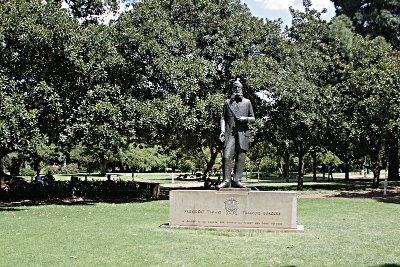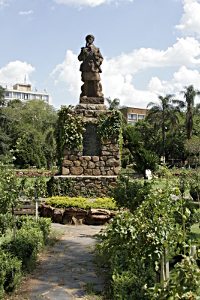Burgers Park in Pretoria
In the heart of the bustling metropolis of Pretoria, South Africa, lies a historical and botanical haven - the venerable Burgers Park. As the oldest park in the city, Burgers Park is not just a haven amidst the urban sprawl but also a living testament to Pretoria's vibrant history. Conceived initially as Pretoria's first botanical garden, this dream was proposed by President Thomas Burgers in 1874.
Upon President Burgers' proposal, the Volksraad allocated 18 stands in Pretoria for the park on 8 October 1874. Great effort was poured into transforming this space into a botanical wonderland, a tranquil oasis in the burgeoning city. Renowned botanist James Hunter and George Heys, to whom the contract of laying out the park was awarded, collaborated in designing this green masterpiece in 1892. Two years later, it was officially christened as the Burgers Park, in honor of President Thomas Burgers.
However, this botanical dream faced a significant challenge when the British annexed the Transvaal in 1877. With a more suitable location identified for the botanical gardens, attention diverted away from Burgers Park, marking the beginning of a period of decline for this burgeoning green sanctuary.
Despite this setback, Burgers Park continued to evolve, becoming home to a collection of historical structures and memorials that encapsulate Pretoria's rich history. The first of these was the ornamental pond, built in 1892, followed by a Victorian-styled bandstand in 1895. This octagonal iron structure was brought in from MacFarlane & Co in Glasgow, ordered by George Heys.
In 1911, the park saw the addition of a neo-classical pavilion with a refreshment kiosk, designed by Vivian Rees-Poole. The curator's cottage, initially constructed in 1893, was later replaced by a more modern building in 1904.
The park also houses several significant memorials. A poignant Scottish memorial, installed in the mid-1920s, honors the fallen soldiers of the South African Scottish regiment during World War I. A statue of President Thomas Francois Burgers, designed by Moses Kottler, was erected in 1954, standing as a steadfast reminder of the man behind the park's creation.
The park expanded further in 1974 with the addition of a florarium, enhancing the botanical appeal of its northern section. Moreover, a tree planted in 1898 to celebrate Queen Wilhelmina's crowning stands firm, echoing historical ties between South Africa and Holland.
Regrettably, today's Burgers Park, once the pride of Pretoria, grapples with issues of vagrancy and littering. Nonetheless, amidst the urban rush, the park stands resilient, offering a green sanctuary filled with history. With the statue of President Burgers and the South African Scottish Regiment memorial from World War II, the park tells a tale of a city steeped in a rich past. Today, despite its challenges, Burgers Park endures as a beacon of Pretoria's past, embodying the city's rich tapestry of history.


